Salesforce Salesforce Certified MuleSoft Developer II (Mule-Dev-301) Salesforce-MuleSoft-Developer-II Exam Dumps: Updated Questions & Answers (November 2025)
An API has been developed and deployed to CloudHub Among the policies applied to this API is an allowlist of IP addresses. A developer wants to run a test in Anypoint Studio and does not want any policies applied because their workstation is not included in the allowlist.
What must the developer do in order to run this test locally without the policies applied?
Refer to the exhibit.

The flow name is ‘’implementation’’ with code for the MUnit test case.
When the MUnit test case is executed,what is the expected result?
In a Mule project, Flow-1 contains a flow-ref to Flow-2 depends on data from Flow-1 to execute successfully.
Which action ensures the test suites and test cases written for Flow-1 and Flow-2 will execute successfully?
Refer to the exhibit.
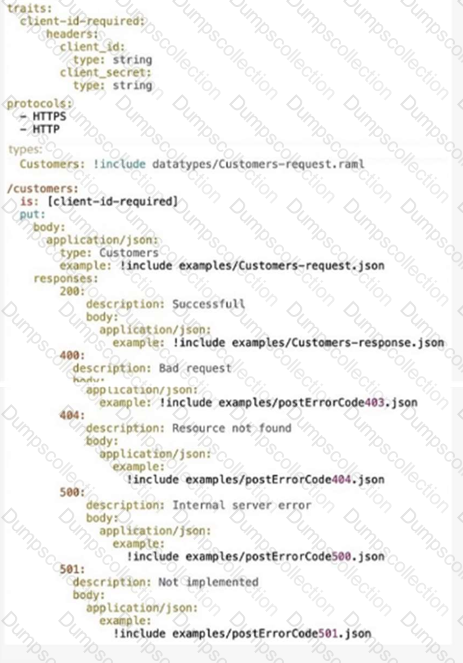
A developer generates the base scaffolding for an API in Anypoint Studio.
Which HTTP status code is returned while testing using the API Kit console if no values are entered in client-secret?
When implementing a synchronous API where the event source is an HTTP Listener, a developer needs to return the same correlation ID backto the caller in the HTTP response header.
How can this be achieved?
A system API that communicates to an underlying MySQL database is deploying to CloudHub. The DevOps team requires a readiness endpoint to monitor all system APIs.
Which strategy should be used to implement this endpoint?
A healthcare portal needs to validate the token that it sends to a Mule API. The developer plans to implement a custom policy using the HTTP Policy Transform Extension to match the token received in the header from the heathcare portal.
Which files does the developer need to create in order to package the custom policy?
An organization uses CloudHub to deploy all of its applications.
How cana common-global-handler flow be configured so that it can be reused across all of the organization’s deployed applications?
Refer to the exhibit.
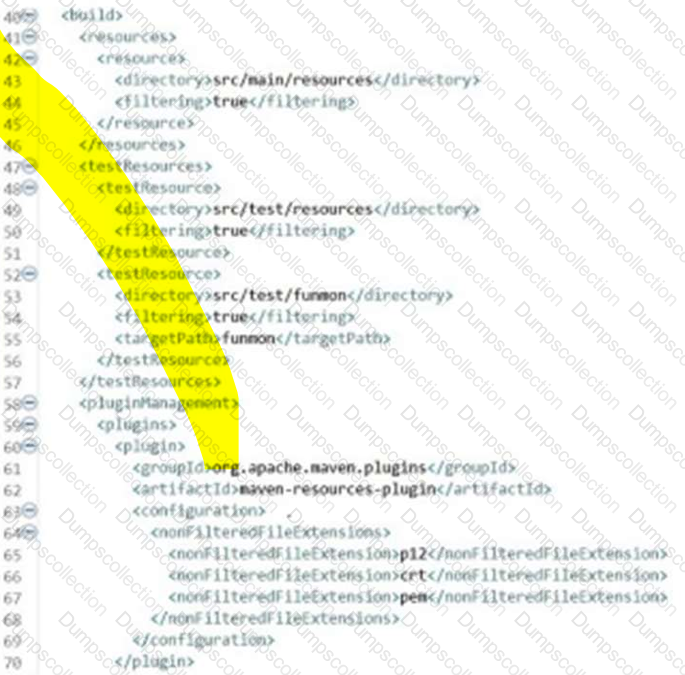
A Mule application pom.xml configures the Maven Resources plugin to exclude parsing binary files in theproject’s src/main/resources/certs directory.
Which configuration of this plugin achieves a successful build?
A)
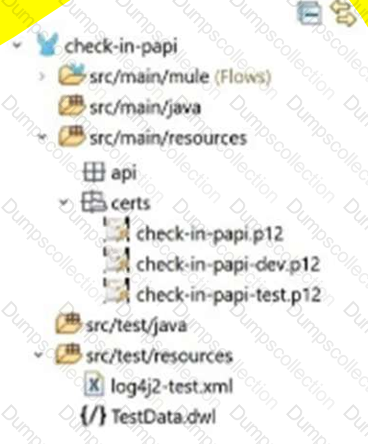
B)
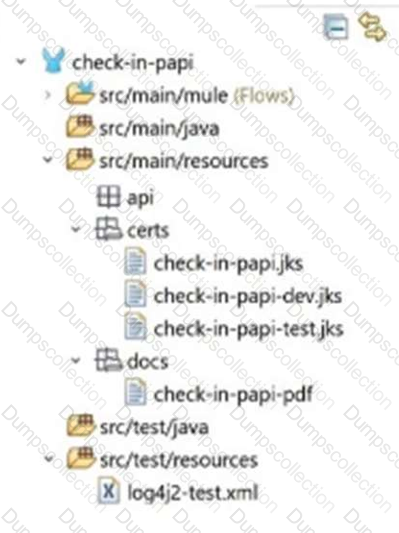
C)
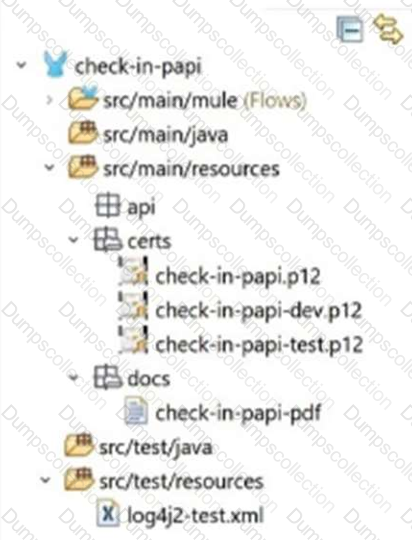
D)
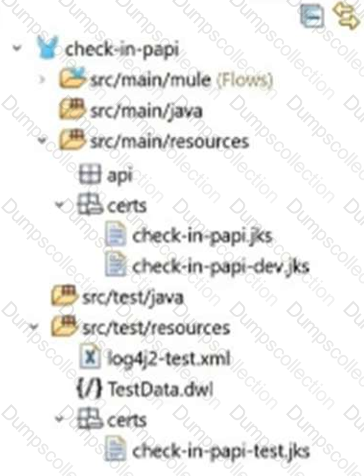
Which pattern should be used to invoke multiple HTTP APIs in parallel and roll back failed requests in sequence?

